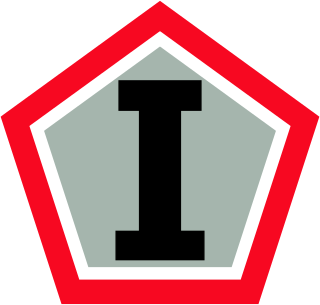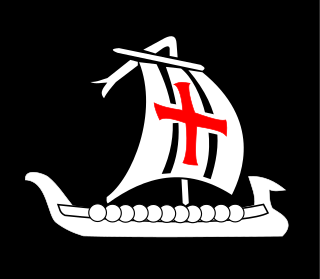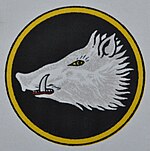The British Expeditionary Force (BEF) was the six divisions the British Army sent to the Western Front during the First World War. Planning for a British Expeditionary Force began with the 1906–1912 Haldane Reforms of the British Army carried out by the Secretary of State for War Richard Haldane following the Second Boer War (1899–1902).

I Corps was an army corps in existence as an active formation in the British Army for most of the 80 years from its creation in the First World War until the end of the Cold War, longer than any other corps. It had a short-lived precursor during the Waterloo Campaign. It served as the operational component of the British Army of the Rhine during the Cold War, and was tasked with defending West Germany.

IV Corps was a corps-sized formation of the British Army, formed in both the First World War and the Second World War. During the First World War the corps served on the Western Front throughout its existence. During the Second World War it served in Norway and Britain until it was transferred to India, which was threatened with attack after Japan entered the war.

The 1st Canadian Division is a joint operational command and control formation based at CFB Kingston, and falls under Canadian Joint Operations Command. It is a high-readiness unit, able to move on very short notice, and is staffed and equipped to meet Canada's military objectives to counter any potential threat.

The II Corps was an army corps of the British Army formed in both the First World War and the Second World War. There had also been a short-lived II Corps during the Waterloo Campaign.

III Corps was an army corps of the British Army formed in both the First World War and the Second World War.

The Third Army was a field army of the British Army during World War I that saw active service on the Western Front throughout the war.

General Henry Seymour Rawlinson, 1st Baron Rawlinson,, known as Sir Henry Rawlinson, 2nd Baronet between 1895 and 1919, was a senior British Army officer in the First World War who commanded the Fourth Army of the British Expeditionary Force at the battles of the Somme (1916) and Amiens (1918) as well as the breaking of the Hindenburg Line (1918). He commanded the Indian Army from 1920 to 1925.

The Battle of Amiens, also known as the Third Battle of Picardy, was the opening phase of the Allied offensive which began on 8 August 1918, later known as the Hundred Days Offensive, which ultimately led to the end of World War I. Allied forces advanced over 11 kilometres (7 mi) on the first day, one of the greatest advances of the war, with Gen Henry Rawlinson's British Fourth Army, with nine of its 19 divisions supplied by the fast-moving Australian Corps of Lt General John Monash and Canadian Corps of Lt General Arthur Currie, and Gen Marie Eugène Debeney's French First Army playing a decisive role. The battle is also notable for its effects on both sides' morale and the large number of surrendering German forces. This led Erich Ludendorff to later describe the first day of the battle as "the black day of the German Army". Amiens was one of the first major battles involving armoured warfare.

The Reserve Army was a field army of the British Army and part of the British Expeditionary Force during the First World War. On 1 April 1916, Lieutenant-General Sir Hubert Gough was moved from the command of I Corps and took over the Reserve Corps, which in June before the Battle of the Somme, was expanded and renamed Reserve Army. The army fought on the northern flank of the Fourth Army during the battle and became the Fifth Army on 30 October.

The Fifth Army was a field army of the British Army during World War I that formed part of the British Expeditionary Force on the Western Front between 1916 and 1918. The army originated as the Reserve Corps during the preparations for the British part of the Somme Offensive of 1916, was renamed Reserve Army when it was expanded and became the Fifth Army in October 1916.

The VII Corps was an army corps of the British Army active in the First and Second World Wars. In the early part of the Second World War, it was part of the defence forces of the United Kingdom, and later acted as a shadow formation for deception purposes.

First United States Army Group was a fictitious Allied Army Group in World War II prior to D-Day, part of Operation Quicksilver, created to deceive the Germans about where the Allies would land in France. To attract Axis attention, prominent US general George S. Patton was placed in command of the fabricated formation.

X Corps was a corps of the British Army that served in the First World War on the Western Front before being disbanded in 1919. The corps was re-formed in 1942 during the Second World War and saw service in the North African Campaign and the Italian Campaign where it came under command of the US Fifth Army and the British Eighth Army.

13th Corps was a corps-sized formation of the British Army that fought on the Western Front during the First World War and was reformed for service during the Second World War, serving in the Mediterranean and Middle East throughout its service.

V Corps was an army corps of the British Army that saw service in both the First and the Second World Wars. It was first organised in February 1915 and fought through the First World War on the Western front. It was recreated in June 1940, during the Second World War and was substantially reorganised in 1942 for participation in Operation Torch. It fought through the Tunisia Campaign and later the Italian Campaign.

This is the order of battle for the Battle of the Somme. The Battle of the Somme was an offensive fought on the Western Front during World War I from 1 July to 18 November 1916 as one of the greatest engagements of the war. It was fought between French, British and Dominion forces and the German Empire in the Somme River valley and vicinity in northern France.

VI Corps was an army corps of the British Army in the First World War. It was first organised in June 1915 and fought throughout on the Western Front. It was briefly reformed during the Second World War to command forces based in Northern Ireland, but was reorganized as British Forces in Ireland one month later.

The 58th Division was an infantry division created in 1915 as part of the massive expansion of the British Army during the First World War. It was a 2nd Line Territorial Force formation raised as a duplicate of the 56th Division. After training in Britain, the division joined the British Expeditionary Force (BEF) on the Western Front in 1917. It saw action at the battles of Arras and Passchedaele in 1917 and the German spring offensive in 1918. It then took part in the Battle of Amiens and the final Allied Hundred Days Offensive of the war. The division was recreated during the Second World War, as an imaginary deception formation.



















